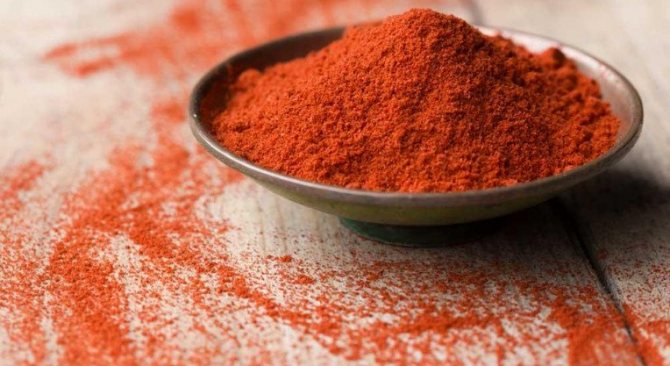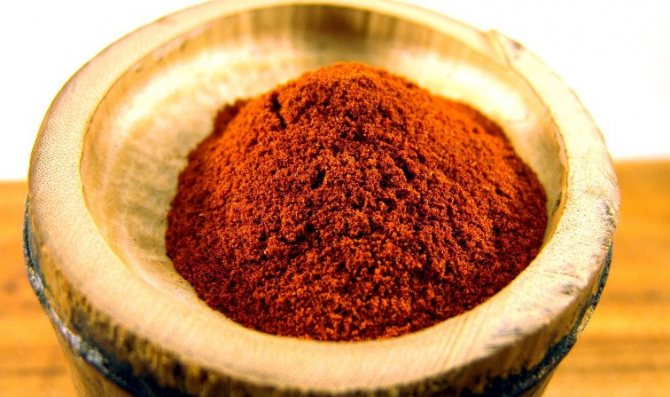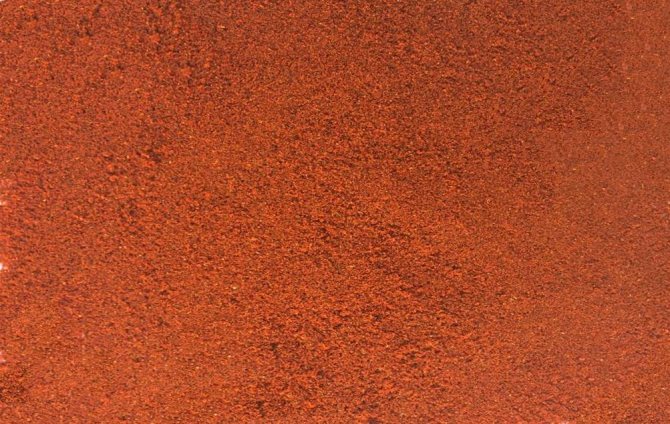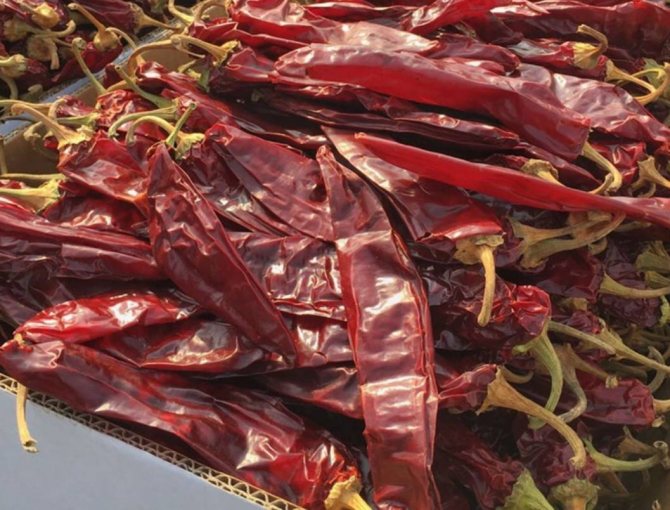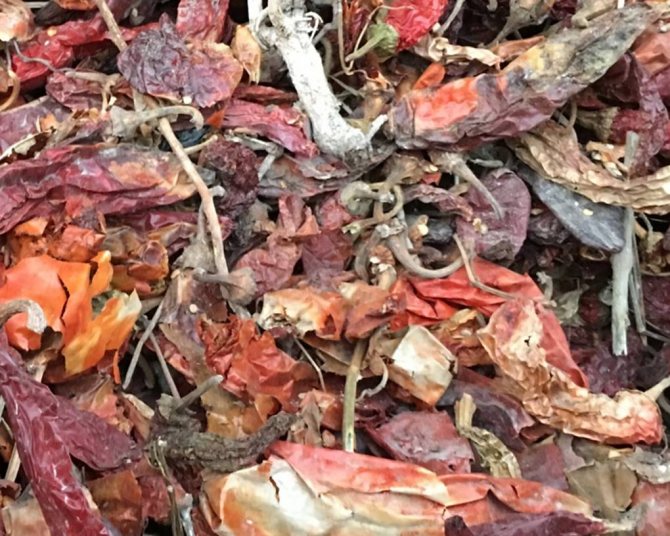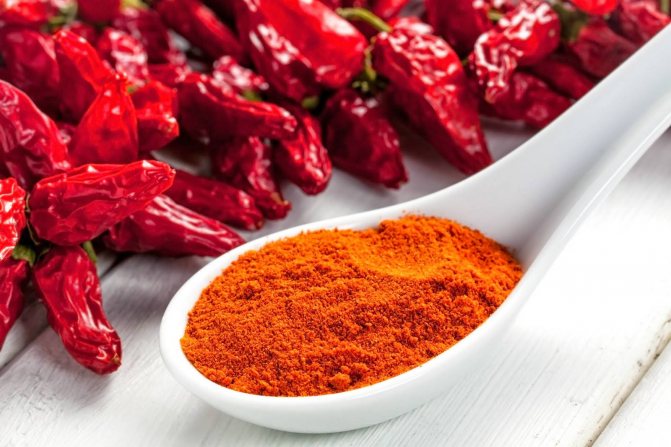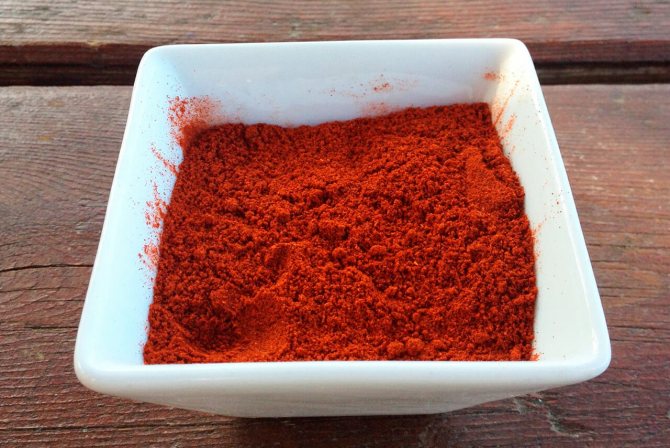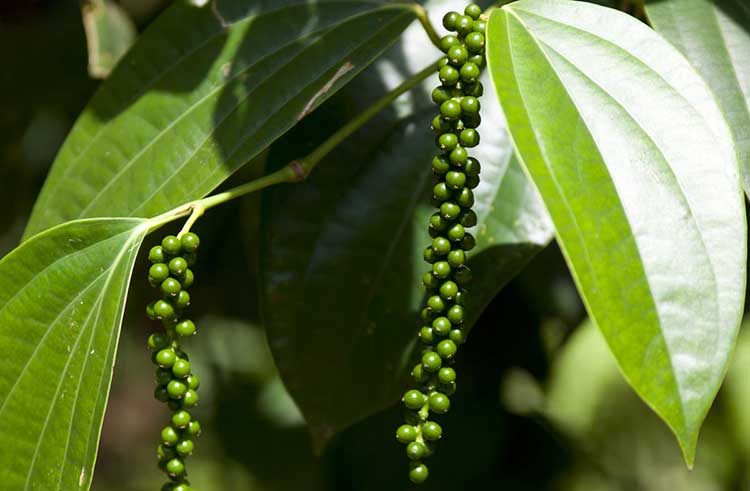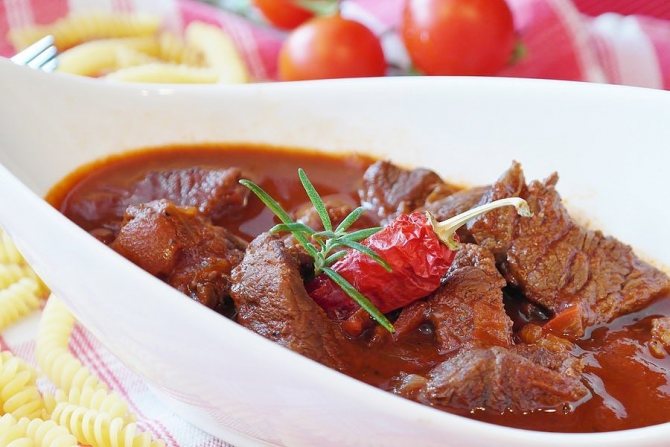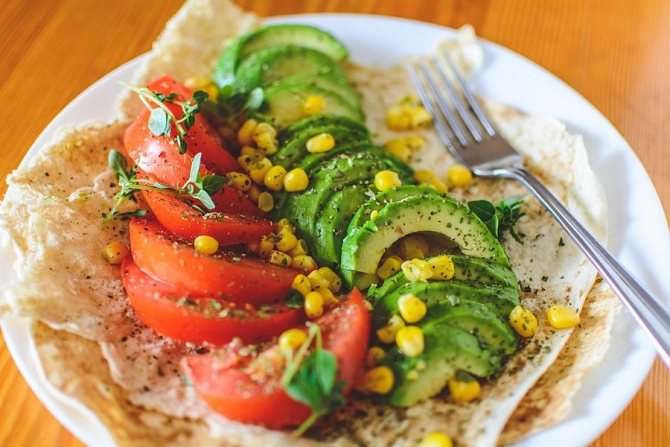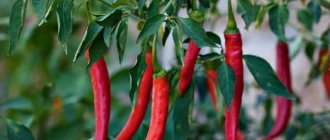Pepper got its name from a curious historical error. As you know, Christopher Columbus came to America quite by accident - the king sent him to India for spices - including black pepper (dried fruits of the Piper nigrum vine, which were then brought from Asia, and they were very expensive).
Columbus, on the other hand, brought the fruits of a completely different plant (Capsicum annuum) to Spain and, confusing it with an already known spice, also called it pepper. Some species of Capsicum annuum really burn better than any nettle, but the American vegetable was nothing like a vine of a true pepper (Piper nigrum). Not all the fruits brought were hot. It turned out that some varieties of the newly appeared pepper with a clear conscience can be called “sweet”. However, the name stuck and people got used to this strange confusion.
Paprika subspecies
Currently, vegetable paprika has many varieties, among which are:
- poblano;
- jalapeno;
- cayenne;
- yellow;
- serrano;
- anaheim;
- Chinese capsicum;
- berry;
- pubescent and others.
Each variety has its own fruit shape and taste. Some varieties are sweet or spicy, while others are pungent. The bitterness level depends on the amount of capsaicin. In spicy varieties, capsaicin is much higher than in sweet ones. Fans of cooking and gardening know that the statement that paprika is a bell pepper can be considered true only in part. Both are types of capsicum.
In general, pepper can be divided into three types:
- paprika (or spicy);
- sharp burning;
- sweet.
Almost all popular varieties belong to one of these types. The difference between paprika and sweet pepper lies in some taste nuances, they have a weak pungent taste and are popular in salads.
Paprika or bell peppers grown in the CIS countries belong to the type of thick vegetable Capsicum. The type of Vegetable Capsicum long, for the most part, includes varieties of spicy, which are grown in vegetable gardens.
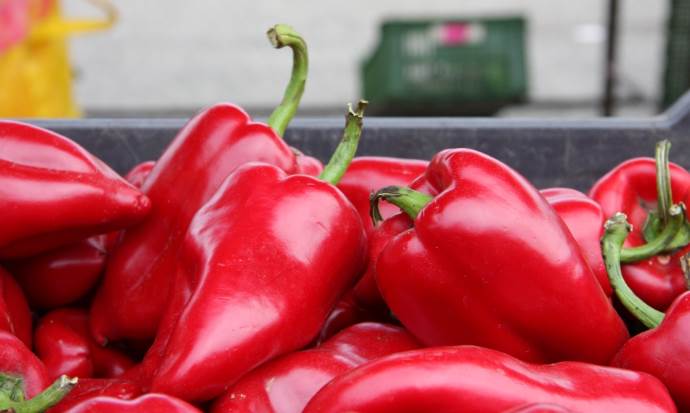
Bell pepper
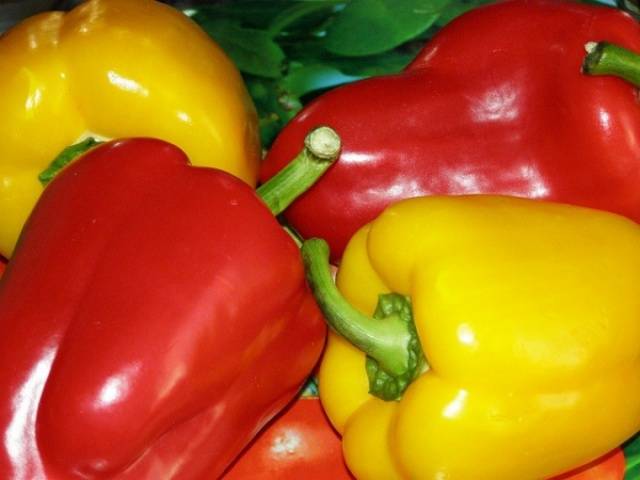

One of the most popular members of the nightshade family. In our country, it is better known as bell pepper. The homeland of this vegetable is Central America, and its history goes back more than 20 centuries.
This culture is very demanding on light and heat. That is why in our northern regions it is most often grown in a greenhouse. The southern regions can successfully cultivate sweet peppers outdoors.
Its sweet fruits come in a myriad of different forms. The most common forms are as follows:
- cylindrical;
- conical;
- oval;
- rounded and others.
In addition to various forms, it is distinguished by a rich color gamut, which includes almost the entire spectrum of colors. Depending on the variety, the fruit can be light green to black in color. Their sizes with weight will also differ: from 10 to 30 cm and from 30 to 500 grams.
Its nutritional value is due to its high content of vitamin C. It also contains vitamins A, B, mineral salts and essential oils. Its use in cooking has no boundaries and is universal.
Chemical composition
Sweet pepper contains a huge amount of nutrients - carbohydrates, fats, proteins.These vegetables contain ascorbic acid, B vitamins, vitamins C, E, A, carotene, magnesium, calcium, zinc, sodium, potassium, copper, fluorine, iodine, folic acid, iron, nicotinic acid.
The carbohydrates that make up the paprika are presented in the form of soluble sugars - fructose, glucose, sucrose. Also, a sweet vegetable contains fiber, starch, organic acids, pectin substances, nitrogenous substances (50% of them is protein).
Beneficial features
Paprika is an extremely healthy vegetable with a unique set of vitamins and minerals. In 1937, Alfred Szent-Györgyi (Nobel laureate in medicine), while researching the negative effects of paprika on the human body, discovered a huge amount of vitamin C.
As it turned out, the vegetable contains five times more ascorbic acid than lemons. In 100 g of paprika - 150 mg of vitamin C with a daily human need of 60 mg. Moreover, an overdose is impossible. The excess leaves the body along with urine.
In addition to ascorbic acid, paprika contains:
- vitamins A, B1, B3, B2, B6, B5, B9, E, K, P, C;
- zinc;
- iodine;
- phosphorus;
- iron;
- calcium;
- sodium;
- potassium.
With regular use of sweet red pepper, the following occurs:
- increased immunity;
- improvement of the body as a whole;
- improved blood test performance;
- strengthening the cardiovascular system;
- normalization of the processes of food digestion and assimilation of nutrients;
- reducing the risk of cancer;
- normalization of metabolism;
- improvement of vision (especially with myopia);
- increased production of endorphins (useful for stress, depression, loss of energy);
- improved memory;
- strengthening hair and nails;
- reduction of excess weight and edema;
- normalization of the state of ODA in osteoporosis;
- regulation of blood pressure.
Paprika contains a substance called capsaicin, which thins the blood and reduces the risk of blood clots. Fiber promotes the elimination of toxins and toxins, improves intestinal motility.
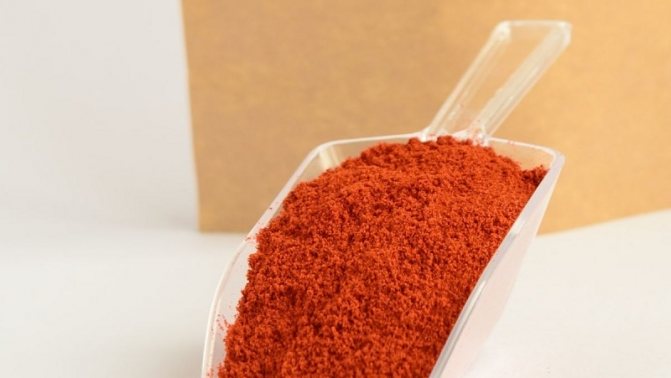

Contraindications
Dishes with the addition of paprika are not recommended for people with diseases of the liver, kidneys, gastritis, colitis, cholecystitis, stomach and duodenal ulcers.
Also, a contraindication to its use is individual intolerance, and during pregnancy and breastfeeding it is undesirable to consume spicy varieties in large quantities.


Origin story


The homeland of red capsicum is South America. It is also cultivated in Spain, Turkey, USA and Hungary. Columbus brought paprika to Europe, he called it "Indian red salt".
In the Middle Ages, red ground pepper was valued worth its weight in gold, it was treated to kings and noble nobles.
Ordinary people could not afford to buy this spice due to the high cost, so they used the paprika available at that time.
In Hungary, they learned about it in the 17th century. And today seven varieties of paprika are produced there.
In cooking
- Burning and slightly burning are widely used in cooking as a seasoning for many dishes, as well as for salting. In addition, pungent pungent is used in medicine and alcoholic beverage production.
- Paprika It is most beneficial fresh, for example, when added to salads. Canned peppers retain about 50-80% of nutrients, which is especially important in winter. For salting, a little unripe sweet is mainly used.
- Bitter pepper used to add to seasonings, as well as an independent spice. It is added to meat dishes, soups, vegetable dishes. In raw and boiled form, sweet and slightly burning is eaten with meat, cheeses, and also used to make salads.
What to replace in recipes?


Cayenne pepper
The spice has a unique smoky aroma and pungent taste and is an essential component of many dishes, revealing their characteristics.
If you do not have a much needed ground ingredient at hand, you can try to find analogues:
- Cayenne pepper.
Use with caution because of the spiciness and be sure to add sugar, honey or a little cream to neutralize the taste; - Chili pepper.
Putting in small quantities; - Black and white peppers
can be combined with tomatoes - this way you get a red color and a piquant note; - Red pepper
like chili, you need to put in a little.
In medicine
- Acute In the course of research, it was found that the substance capsaicin, which is part of paprika, can increase acidity and increase the production of gastric juice. For medical purposes, mainly pungent varieties with large red fruits are used. Tinctures and ointments containing hot pepper are effective for rheumatism, neuralgia, myositis, radiculitis, frostbite. Pepper patch is an excellent alternative to mustard plasters.
- Sweet Ascorbic acid and rutin, which are part of paprika, help to increase the elasticity of the walls of blood vessels, help remove cholesterol, prevent the development of hypertension and atherosclerosis. Sweet peppers are recommended for vitamin deficiency, anemia, scarlet fever, and also as a means to increase appetite and stimulate digestion.


Are red peppers and paprika the same thing?
Red peppers and paprika are varieties of paprika with a red skin color. Visually, paprika usually has a brighter red color, but the main difference between paprika and paprika is its pungency, which is determined by the capsaicin content. Red pepper is hotter, it is also called hot or chili.
Check out the benefits and uses of allspice.
In folk medicine
- Sweet To increase appetite and improve digestion, paprika tincture is used. In addition, green sweet is able to improve the work of the sebaceous glands, strengthens hair and nails. Sweet pepper juice is recommended for patients with diabetes mellitus. Mixed with carrot juice, its juice lightens age spots, and if you add spinach juice, you get an effective remedy for intestinal colic.
How to choose and store
In the supermarket, it is difficult to determine the quality of peppers packaged in bright and attractive sachets. Therefore, you will have to focus on the brand, giving preference to more expensive products of well-known brands. The fact is that unscrupulous manufacturers often mix pepper seeds and tails into the raw materials to reduce costs, but what is even worse - they add spent, that is, waste after squeezing essential oils, which makes the taste more bitter. Some people mix hot peppers with paprika, which, in principle, is not so bad, but reduces the pungency. Finally, it is not uncommon to find mixtures dyed with artificial pigments for attractiveness.
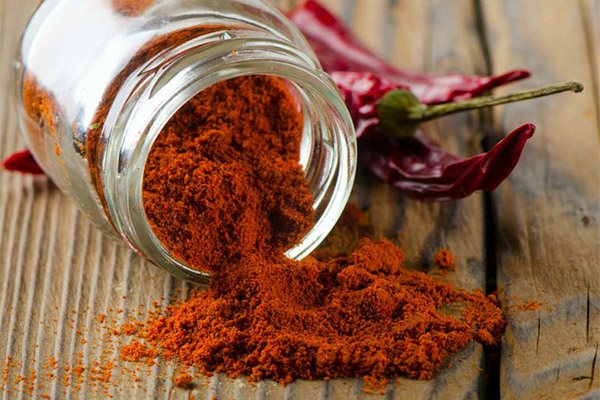

At home, you can check the pepper by brewing it in the same way as tea - 1 tsp. a quarter glass of water. You need to see if a greasy stain appears on the surface - it indicates the presence of a fat-soluble dye. You also need to evaluate the color of the "tea leaves" - for a high-quality one it will be uniform, muted red-orange, without any extraneous inclusions. Too bright red indicates the presence of pigment. The mixture should give off a peppery aroma.And, of course, it needs to be tested for taste - only pungency and no bitterness!
It is recommended to store ground red pepper in a glass container with a tight-fitting lid. Like all other spice powders, it should be kept in a dry place, where neither moisture nor steam can penetrate. And you can only pick it up with a dry spoon, otherwise lumps will appear in the mixture. It is also important to protect it from ultraviolet rays, which have a damaging effect on the spice.
We advise you to read:
how to choose and store curry seasoning
To read
What to cook with paprika
The beneficial properties of paprika are determined by the unique chemical composition of sweet paprika, since the spice perfectly retains all the properties of the fruit, even after drying.
There is probably not a single national cuisine in the world where spices obtained from pepper are not used. Asian cuisine uses both hot peppery ground spices and sweet dried cereals. Mexican, and indeed the entire South American cuisine, rightfully cannot do without this culinary addition - after all, this is the birthplace of the culture of peppers.
In European cooking, paprika, both powdered and in the form of coarsely crushed pieces of fruit, is especially widely used in southern countries — Spain, Portugal, Italy, Bulgaria, and Hungary. A classic dish of Austrian and Hungarian cuisine - paprikash is unthinkable without the presence of a large amount of pepper seasoning - sweet red paprika! Paprika is very widely used by German cooks - it is flavored with soups and sauces (from red paprika they acquire the same color), cheeses, sausages.
Flakes and green and red paprika are generously added to meat dishes from beef (famous goulash!), Lamb, chicken, veal, pork. This seasoning gives the hot dish a unique sweetish, not too spicy taste and aroma. Sweet paprika in any form will not spoil vegetable salads, especially tomatoes and cabbage. Combines both ground paprika and flakes with cottage cheese, rice, eggs, seafood, minced meat.
Sweet ground paprika It is readily used by chefs in the event that the main component of the prepared dish - for example, meat or vegetables - needs to be set off with a sweetish spicy taste. Flaked paprikaadded to a dish swells and gives an increase in food volume. If these are green paprika flakes, then such an addition will slightly affect the total calorie content. Such a recipe for baking bread with the introduction of sweet paprika in the form of flakes is given in the old book of Ayurveda.
From ancient times to the present day, sweet paprika seasoning has been on the table for lovers of delicious and healthy food.
>
75
How is the seasoning made from paprika?
For a savory spice to hit your table, it has a long way to go from planted to production. Initially, sweet peppers are grown to full ripeness, so that they become rich red. The fruits are collected and sent for drying.
The degree of pungency is regulated by the addition of seeds and vegetable partitions, since it is they that contain capsaicin - a crystalline substance that gives a burning taste. The fruits are completely dried, losing a significant part of their original mass, and only then are they ground into powder.
You can make your own seasoning by chopping and drying the bell peppers in the oven or in the sun. Grinding is convenient in a coffee grinder to achieve maximum grinding of the product. Read our article on the topic: “4 tools for chopping spices“.


The famous seasoning is obtained from such peppers.
Common questions
Paprika is a powder made from different varieties of paprika, which has the beneficial properties of a vegetable and its taste, which affects the aroma and pungency of the seasoning. The powder is in demand in the cuisines of different countries, and is also used in cosmetology and medicine.
The forums of culinary sites are full of questions: "I don't understand in any way - paprika and pepper, are they the same or different?"
Here's the answer: the famous spice paprika It is made from some plants, which are called peppers, of the Solanaceae family. Here, under the name of bell pepper, refers to the plant from which the seasoning is then obtained - piquant paprika in the form of powder or flakes. Powdered culinary aid made from ripe fruits mild capsicum genus Capsicum (Capsicum).

